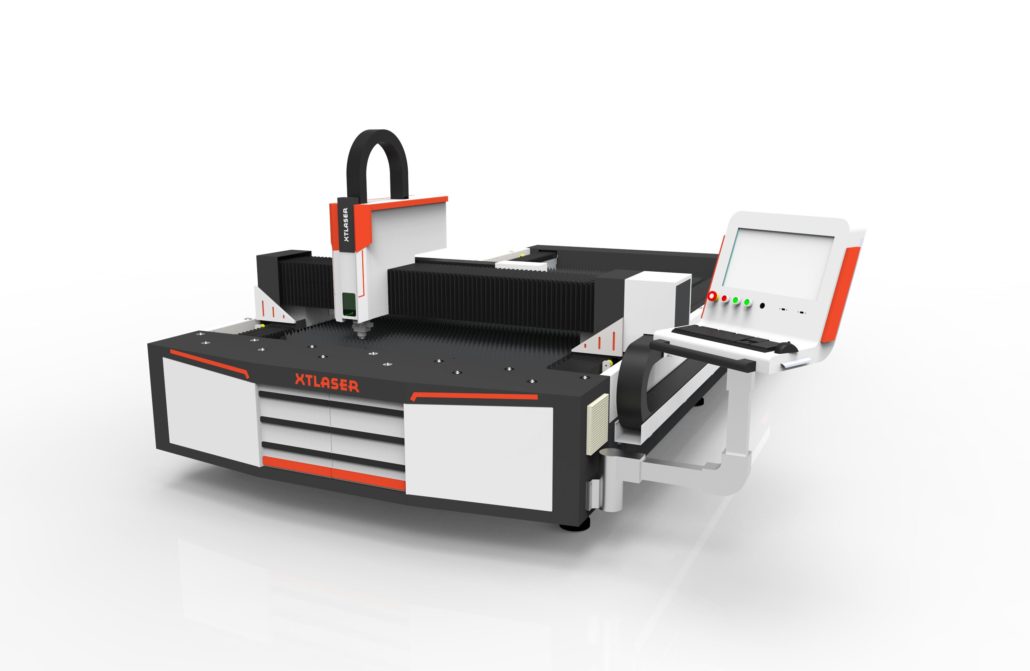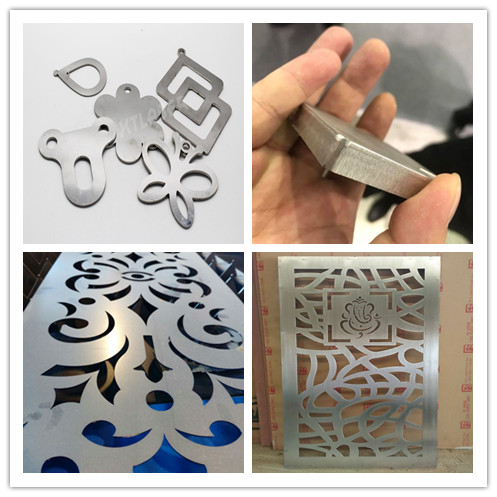Fiber laser cutting machine is a very popular and high efficiency machine for cutting metal, it can cut different kind metals, like stainless steel, carbon steel, aluminum sheet, brass, copper, galvanized plate, etc, so now it’s widely used in the industries of kitchen ware, steel furniture, elevator,auto parts and so on.

Cutting parameters for stainless steel
| Material | Cutting machine watt | Max cutting thickness |
| Stainless steel | 500w | 3mm |
| Stainless steel | 750w | 4mm |
| Stainless steel | 1000w | 5mm |
| Stainless steel | 1200w | 5mm |
| Stainless steel | 1500w | 6mm |
| Stainless steel | 2000w | 8mm |
| Stainless steel | 3000w | 10mm |
Stainless steel laser cutting samples

The laser power is one of the most important factors, in the laser treatment of different materials, as well as SS Cutting.
Also, a lower power laser beam is utilize when we want a greater cutting precision. On the other hand, thicker and more durable materials require a higher powered laser beam. For example, an 8mm metal sheet requires at least 1000 watts to cut effectively.
The pulse frequency is somewhat proportionally link to the laser beam power.
Modern lasers offer sophisticated control features for the laser cutting process
that allow for automatic increase or decrease of the pulse frequency according to the material at hand.
Each material requires a specific type of gas to use the laser
in order for the machining to effective and safe. The wood which is flammable excludes the use of oxygen for example because there would be a fire hazard. Oxygen on the other hand, is use when cutting metal surfaces which are free of oxides.
The gas type is not the only factor that comes into play. The quality of the gas is equally important. Different purity versions of the same type of gas, affect differently the cutting process both time- & quality-wise.
The pressure of the laser gas is another important factor to keep in mind. The gas pressure is influence he thickness of the material to cut. The thinner the material, the lower the gas pressure or there is a risk of damaging the material and the laser device itself.
The cutting nozzles significantly influence the laser cutting process. For example, when we have to deal with low-pressure laser cutting, smaller nozzles are require. Conversely, when the material machining calls for a higher-pressure cut, then we need to use larger nozzles.
The distance of the nozzles from the cutting surface plays an important role in the quality of the final laser cut result. As a rule of thumb, the shorter the distance between the tip and the surface, the more precise and higher-quality cut we have.
That being said, in several occasions it is advised to increase the distance in order to prevent damage to the equipment.
Packing and shipment:
